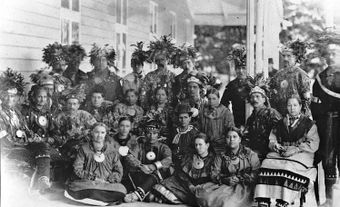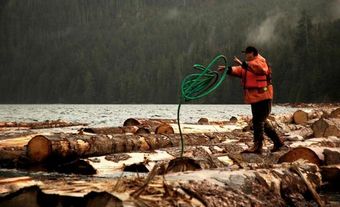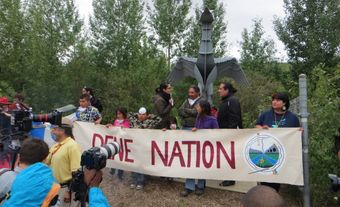The "Pacheedaht" or "Pacheenaht" ("sea-foam-on-rocks people") take their name from the former village site of "p'aachiida" (pronounced "pah-chee-da") at the head of Port San Juan Bay on southwest Vancouver Island. The area between Sheringham Point and Bonilla Point is now recognized as Pacheenaht territory. Their territorial claims also extend into the ocean to include several offshore fishing banks.
Traditions vary as to the origin of the Pacheenaht people. Some oral traditions indicate that at some distant time in the past, the Pacheenaht and Ditidaht were the same people and they lived at Jordan River. Another tradition suggests that the Pacheenaht once spoke the Sooke Coast Salish language. In the 1850s, the entire Pacheenaht population was not more than 60, the group having suffered from disease. Today, approximately half of the 210 Pacheenaht live on-reserve at Port Renfrew. A few people continue to speak the traditional Pacheenaht dialect of the Nitinat ("Ditidaht") language.
It is likely that the Pacheenaht, like their neighbours, the Ditidaht, were a local group or alliance of autonomous local groups with neither Band nor confederacy organization. Each local group consisted of a number of people occupying a specific geographical area and surrounding chiefs and their families. The local community was designated by the name of its main village's location.
In the early historical period, there were about four Pacheenaht villages, in addition to the village at Port San Juan. In the spring, the people dispersed to seasonal fishing camps where they caught halibut, red snapper and cod, and dried them for storage. Sockeye salmon fishing occurred between April and July. By September, the people returned to their inside winter village to get ready for the fall salmon runs of steelhead, coho, spring, humpback and dog salmon. Beach foods constituted a significant part of their diet. Like other Bands on the west coast of Vancouver Island, the Pacheenaht were also whalers. Deer, elk and ducks supplemented their seafood diet. Today, Aboriginal foods continue to be eaten by the Pacheenaht.
Pacheenaht band members find employment mostly in the forest industry. Since 1994, the Pacheenaht, along with the Ditidaht and Ohiaht First Nations have joined together with Parks Canada in a business development to co-manage the maintenance, interpretation and marketing of the West Coast Trail within Pacific Rim National Park.
In 2012 Aboriginal Affairs and Northern Development recorded 268 registered Pacheenaht Aboriginal people in Canada.

 Share on Facebook
Share on Facebook Share on X
Share on X Share by Email
Share by Email Share on Google Classroom
Share on Google Classroom




